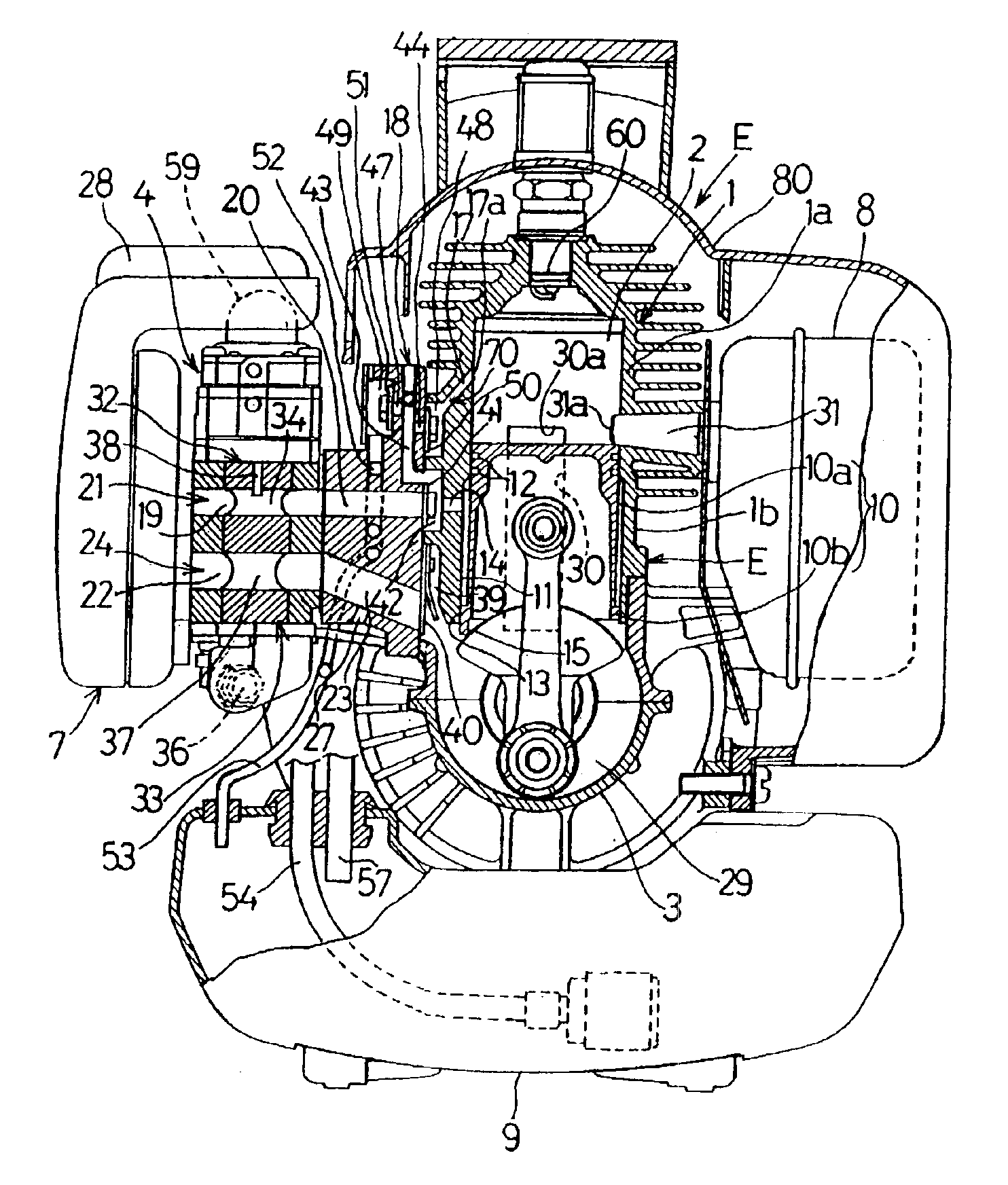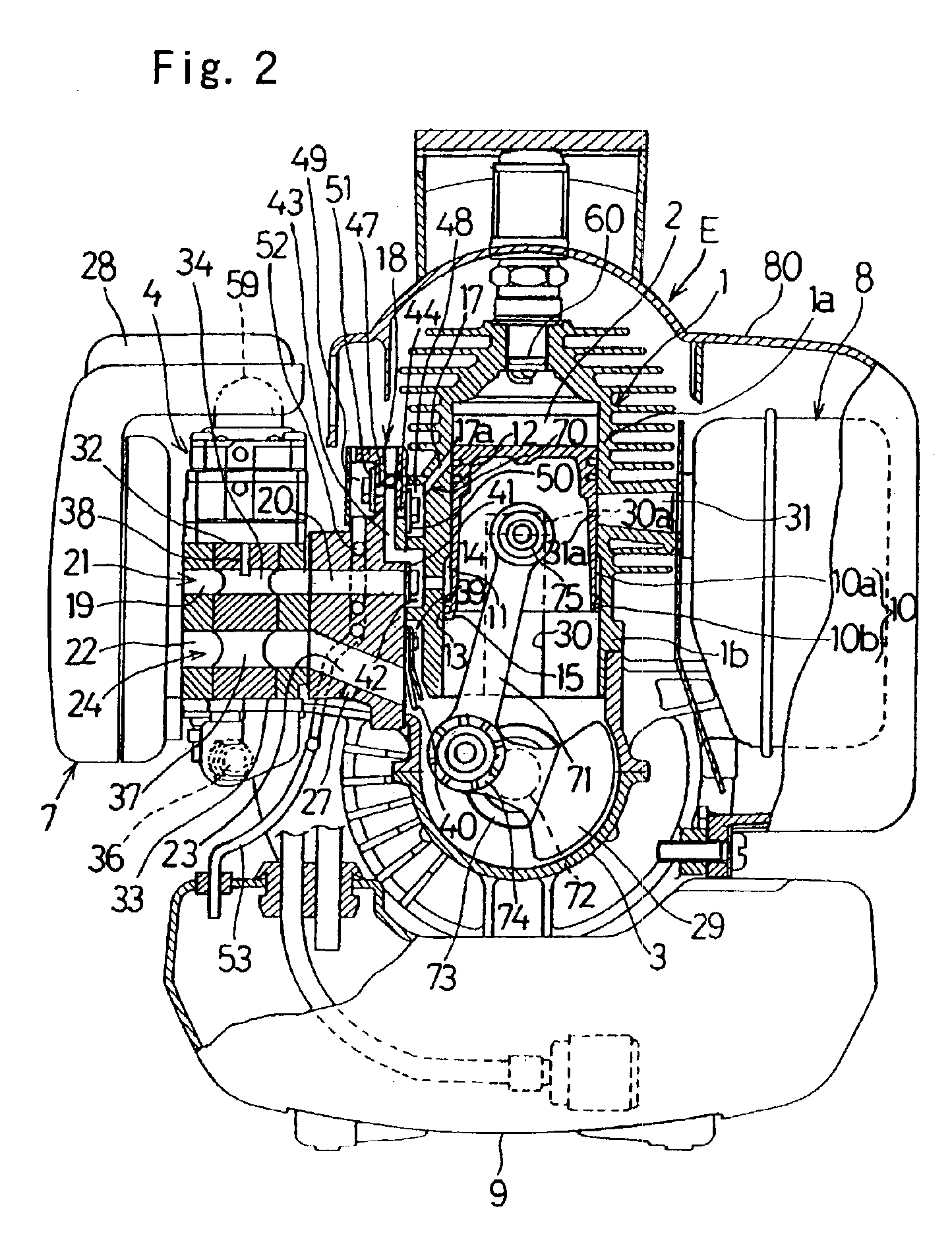Two-cycle combustion engine having two-staged piston
a two-stage piston and combustion engine technology, applied in the direction of combustion engine, machine/engine, fuel air intake, etc., can solve the problems of inability to completely eliminate the increase in cost, and complication in structure, so as to achieve the effect of avoiding the undesirable blow-off phenomenon of the air-fuel mixture and simple structur
- Summary
- Abstract
- Description
- Claims
- Application Information
AI Technical Summary
Benefits of technology
Problems solved by technology
Method used
Image
Examples
first embodiment
[0047]As hereinabove described, with the two-cycle combustion engine according to the present invention, since the blow-off phenomenon of the air-fuel mixture which would otherwise occur during each of the compression stroke, in which the two-staged piston 10 ascends, and the scavenge stroke in which the two-staged piston 10 descends can advantageously be avoided, fuel consumption is low. Also, in addition to the effect of reducing the concentration of the HC exhaust gas, the following advantages can also be appreciated. Specifically, the carburetor 4 includes, in addition to the air-fuel mixture supply port 19 forming a part of the air-fuel mixture passage 21, the air supply port 22 forming a part of the air passage 24 and, on the other hand, the respective openings of the intake port 34 and the air port 37 relative to the air-fuel mixture passage 21 and the air passage 24 can be adjusted as the single rotary valve 32 is rotated during the operation of the combustion engine so that...
second embodiment
[0053]It is to be noted that although in the present invention the two injection passages 70A and 70B have been employed, the number of the injection passages may not be always limited to two such as shown and described and only one or more injection passage may be employed within the broad aspect of the present invention.
[0054]FIG. 7 illustrates a third preferred embodiment of the present invention. In this third embodiment, the structure necessary to relieve the pressure inside the connecting passage 43 communicated with the second valve chamber 42 to which the air-fuel mixture is supplied differs from that employed in any one of the first and second embodiments. More specifically, in any one of the first and second embodiments shown in and described with reference to FIGS. 1 to 3 and FIGS. 5 and 6, respectively, when the injection port 17a shown in FIG. 2 is closed as a result of the ascend of the two-staged piston 10 with the pressure of the air-fuel mixture inside the connectin...
PUM
 Login to View More
Login to View More Abstract
Description
Claims
Application Information
 Login to View More
Login to View More - R&D
- Intellectual Property
- Life Sciences
- Materials
- Tech Scout
- Unparalleled Data Quality
- Higher Quality Content
- 60% Fewer Hallucinations
Browse by: Latest US Patents, China's latest patents, Technical Efficacy Thesaurus, Application Domain, Technology Topic, Popular Technical Reports.
© 2025 PatSnap. All rights reserved.Legal|Privacy policy|Modern Slavery Act Transparency Statement|Sitemap|About US| Contact US: help@patsnap.com



